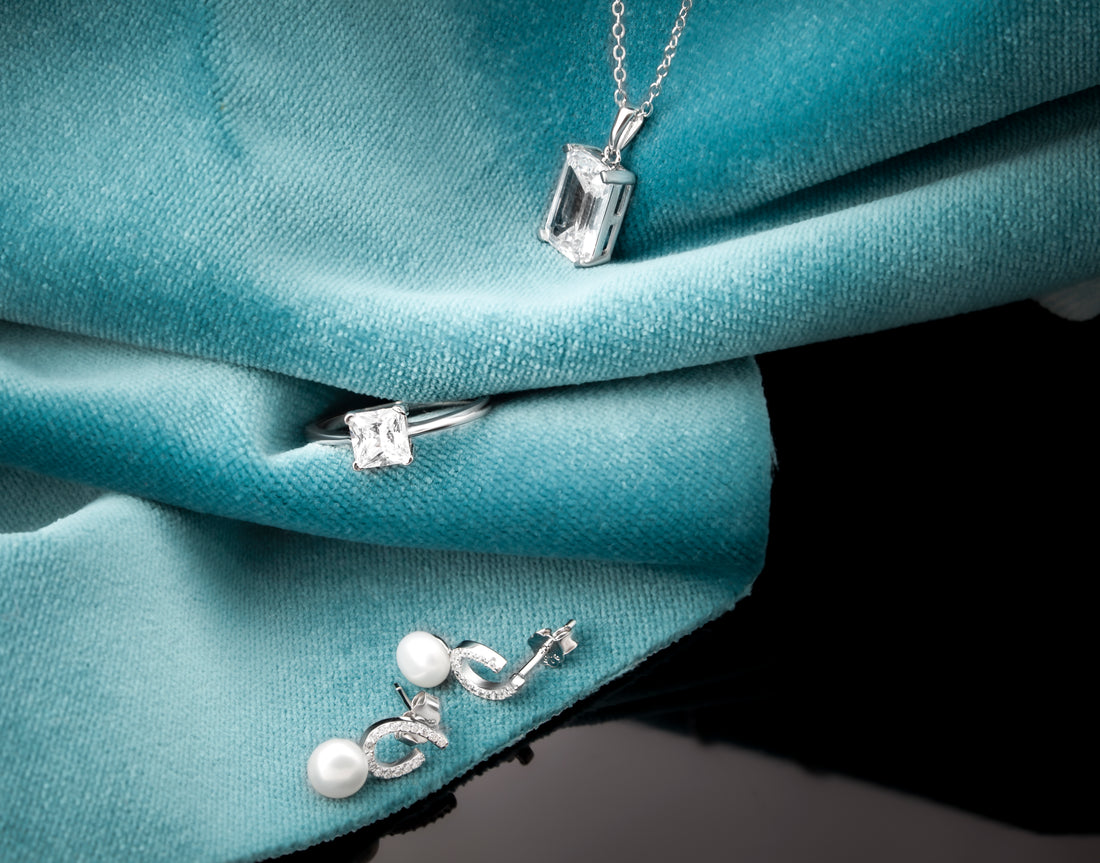Why is sterling silver rhodium-plated?
In some jewellery descriptions, you may see a
 marking indicating that it is rhodium-plated. What is it and why is sterling silver coated with rhodium? Let's see, rhodium itself is also a precious metal, and it is even more valuable than silver because it is much rarer and belongs to the platinum group. But they don't coat silver jewellery with rhodium to sell it at a higher price, because rhodium is a much harder metal (just like platinum), so rhodium plating can protect your jewellery from corrosion and keep it looking good for a long time
marking indicating that it is rhodium-plated. What is it and why is sterling silver coated with rhodium? Let's see, rhodium itself is also a precious metal, and it is even more valuable than silver because it is much rarer and belongs to the platinum group. But they don't coat silver jewellery with rhodium to sell it at a higher price, because rhodium is a much harder metal (just like platinum), so rhodium plating can protect your jewellery from corrosion and keep it looking good for a long timeThe metal itself has a marvellous history of discovery, but we won't go into that. But let's take a closer look at its properties. Rhodium is one of the rarest elements on the planet, with global reserves of no more than a few tens of tons, and its value even exceeds that of gold! The metal is not only used in the jewellery trade, but also in the chemical and glass industries.Rhodium – unique and precious
But it is the jewellers who value it most - for its durability and bright lustre, virtually indistinguishable from silver. Rhodium plating of silver jewellery is widespread and is referred to as rhodium plating. Rhodium is an amazing material: thanks to its various salts it can be made into different shades, allowing rhodium to be deposited not only on silver, but also on gold jewellery and to create an artificially aged design, or vice versa, giving it a modern twist. Rhodium plating helps to increase the strength of soft and brittle silver. A thin layer of rhodium makes sterling silver resistant to moisture, oxidation and silver, the most common causes of silver darkening. This is why it is imperative that silver jewellery is plated with rhodium. If it is not protected with it, the copper contained in the jewellery will gradually oxidise, resulting in a tarnish on the metal.
 But it is important to remember that rhodium is applied in a thin layer, so the jewellery should not be subjected to abrasive cleaning.
But it is important to remember that rhodium is applied in a thin layer, so the jewellery should not be subjected to abrasive cleaning.
Thanks to the rhodium coating:
- The durability is increased;
- The jewellery does not lose its lustre, as rhodium does not darken or fade over time;
- The rhodium protects the jewellery from the effects of chemical agents that cause the sterling silver to thin and deteriorate.
Gold plating
In addition to rhodium, silver jewellery is also coated in gold. This method of coating is called gold plating. But who would want to do that, you might ask, because who would want to market silver as gold? Certainly not. Gilding, which is commonly known as gilding, is mainly decorative in nature.

For many people, gold jewellery is beyond their means, which is where gilding comes in. It helps to give a piece of silver jewellery a golden lustre. The result is a piece of noble metal that looks like gold, but at a much more affordable price. In addition to the bright lustre, gold plating also helps to give the jewellery durability, resistance to oxidation and corrosion, and increase its lustre.
After all, soft gold is coated on top with an additional protective layer, usually made of platinum. So when you see in the description of a piece of jewellery that it is coated with rhodium or gold, it is not a gimmick, but rather a concern for the customer. These coatings protect your jewellery from tarnishing and keep it shiny. You should remember, however, that the plating is always done in a thin layer, so it is very important to take good care of your jewellery, you can read about that in our special article on storage and care.

